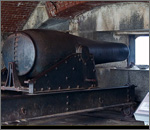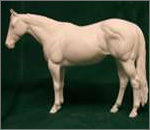Introduction: Hollow casting is a method to suppress displacement of the core during casting when making hollow blades by applying the lost wax method using a core. A wax pattern is made which comp

rises a core and a layer of wax covering the core. Then at least one pin of the same material as the blade is inserted into the wax layer such that this pin engages the core and part of the pin projects from the outer surface of the wax layer, after which, with the portion of the pin which projects from the outer surface of the wax layer being held in a casting mold, the wax is removed, followed by casting.
History: Slush casting is a variant of permanent molding casting to create a hollow casting, hollow metal casting or hollow cast. In the process the material is poured into the mold and allowed to cool until a shell of material forms in the mold. The remaining liquid is then poured out to leave a hollow . The resulting casting has good surface detail but the wall thickness can vary. The process is usually used to cast ornamental products, such as candlesticks, lamp bases, and statuary, from low-melting-point materials. A similar technique is used to make hollow chocolate figures for Easter and Christmas.
The method of hollow metal casting was developed by William Britain in 1893 for the production of lead toy soldiers. It uses less material than solid casting, and results in a lighter and less expensive product. Hollow cast figures generally have a small hole where the excess liquid was poured out.[citation needed. Hollow casting is also used extensively for vitreous china products, such as sinks, urinals, and toilets.
Hollow Casting Process: Casting in a mold by lining the walls of the mold with layers of sculpture material rather than filling up the mold. The technique varies with the medium being used. Cast metal sculptures are made hollow chiefly to ensure that no part is much thicker than any other; such differences in thickness would create tensions in the metal as it shrinks in cooling.

The master pattern will be made from a solid lump of material; this material can be more or less anything, provided it is capable of holding a finish, workable, and non-porous. To prepare it for moulding it should have taper applied to all vertical surfaces. This is to allow the pattern to be drawn out of the mould easily. If there was a hollow or dent in a vertical side then this would be an undercut and so prevent removal of the pattern. This is why taper is applied. By drawing out the end view of the part to see what difference having tapered sides will have on the final model.
Hollow Casting Application: Casting hollow toys and Christmas decorations.
Hollow Casting Advantages: Stronger weapons in comparison to the traditional methos of iron castings.


